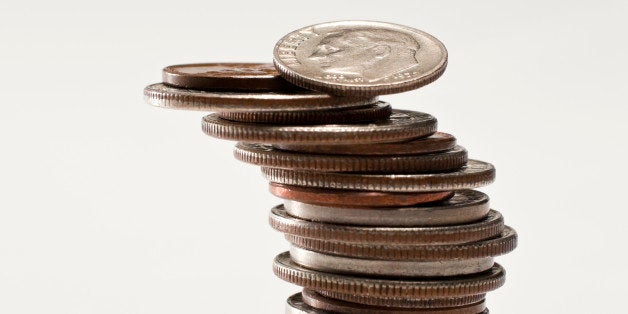
As the World Economic Forum is underway in Davos, Switzerland, we thought it fitting to highlight one of the most pressing economic issues in America today: unequal pay for equal work, otherwise known as the gender wage gap.
Unfortunately, with so much misinformation circulating around this hot-button topic, closing the gender wage gap is an increasingly complicated task. While advances like the passage of the Lilly Ledbetter Fair Pay Act should not be overlooked, it's important to acknowledge that equal pay for equal work is still far from a reality.
A careful examination of the facts shows that closing the gender wage gap isn't just the right thing to do, it also happens to be the smart thing to do -- not just for women, but for the economy as well.
Here's a cheat-sheet for the next time somebody tries to tell you differently:
Not that many women are affected by unequal pay.
A majority of women in the United States are significantly affected by unequal pay and the inequality isn’t isolated to one sector or demographic. According to the 2012 U.S. Census, women still earn 77 cents for every dollar earned by men.
Women make less because they often choose lower-paying careers.
The American Association of University Women researched the income of graduates just one year out of college and found that men had greater starting salaries than women across the board -- even when the comparisons were drawn from graduates who had the same majors and work in the same jobs in the same sectors.
Women make less because they are dually focused on work and family. Lots of women take time off to be with their kids and this accounts for the pay gap.
This explanation might have a leg to stand on if the pay gap only existed at a certain point in certain women’s careers, but as demonstrated above, pay inequity exists from the very beginning of an individual’s career. This means that gender-based income inequality is not a circumstantial issue; it is an institutionalized problem. It's true that many women take time off or leave work permanently to be their child’s primary caregiver -- however this can also be seen as a result of the pay gap: Married couples tend to prioritize the career of the spouse with the greater income.
Okay, but wouldn't income equality be harmful to the economy?
Wrong again. Pay inequity actually stifles the economy. It increases the rate of poverty and magnifies the number of families who are forced to seek government assistance. According to a new briefing report by the Institute for Women’s Policy Research, equity of pay would result in "an additional income of $447.6 billion" for the U.S. economy.
That’s all well and good, but this just seems like a "women’s issue."
Pay inequity might play out along gender lines, but it is not just a women’s issue. The pay gap hurts the economy, hurts families, hurts businesses and hurts our country’s competitiveness abroad. Women have made huge gains in the workplace but real job equality won't exist until it's reflected in a paycheck.

